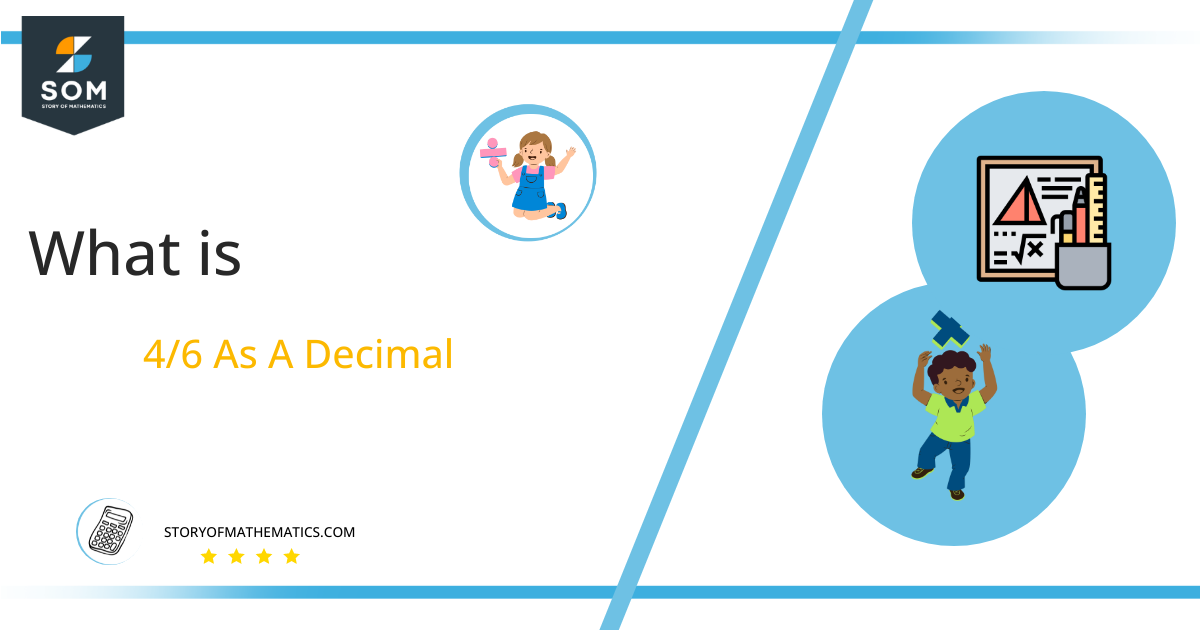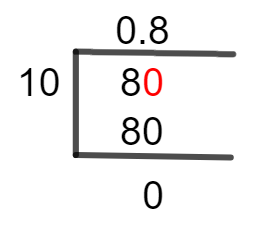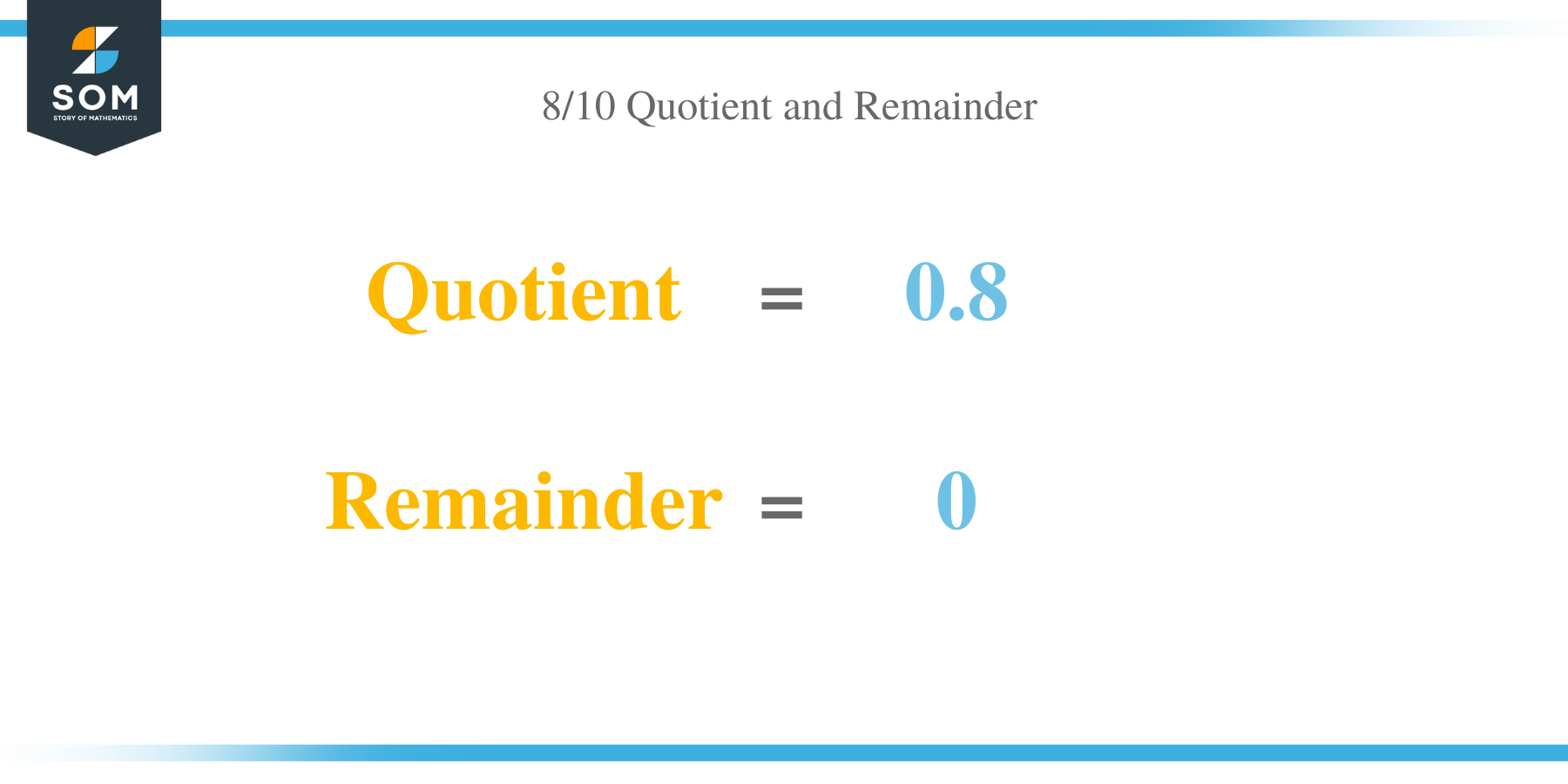What Is 8/10 as a Decimal + Solution With Free Steps

The fraction 8/10 as a decimal is equal to 0.8.
Fraction is a mathematical statement to represent some part of a whole or complete object. Its two components Numerator and Denominator are present on the top and bottom of the line, respectively.
The numerator tells us about the part of the object we have taken and the denominator tells us about the total number of parts of the object.
Most of the time, fractions are solved and converted into decimals because they are easy to use in mathematical operations. There are different methods for this conversion, one of which is the Long Division.
Here, we have a fraction of 8/10 to solve and convert into a decimal by the Long Division method.
Solution
To convert a fraction into a decimal value, we have to divide the numerator by the denominator. There are two components or elements of division, Dividend and Divisor, which are defined as the number which is being divided and the number which is dividing, respectively.
It shows that during the conversion of a fraction into division, the numerator acts as a dividend and the denominator acts as a divisor. So, the given fraction 8/10 is expressed as:
Dividend = 8
Divisor = 10
After the division is completed, we get the Quotient, which is defined as the final result of the division.
Quotient = Dividend $\div$ Divisor = 8 $\div$ 10
Sometimes it is impossible to fully solve a fraction, leaving us with some remaining value. We name this value as the Remainder.
Below is an example showing the complete conversion of a fraction into a decimal.

Figure 1
8/10 Long Division Method
We continue as follows to solve a fraction of 8/10 via Long Division.
8/10 is a proper fraction having a numerator smaller than the denominator. Thus, we call it a Proper Fraction.
8 $\div$ 10
To accomplish division, we follow two rules. First, we have to find a multiple of the divisor, that is closest to the dividend and then subtract it from the dividend. Second, if our dividend or remainder is smaller than the divisor, then we proceed by inserting a Decimal Point in the quotient, which is possible if we multiply our remainder or dividend by 10.
In the presented example, we have a dividend of 8, which is less than the divisor 10, so we will multiply 8 by 10 to add a decimal point in the quotient. After doing this, we have 80 to divide by 10. Mathematically, this division is explained as:
80 $\div$ 10 $\approx$ 8
Where:
10 x 8 = 80
The remainder can be calculated as:
80 – 80 = 0
As we get zero remaining value, we can say that 8/10 is a Terminating Fraction having a Decimal Value of 0.8. Additionally, it shows that if we divide 8 into 10 equal pieces, each one will have a magnitude of 0.8.
Images/mathematical drawings are created with GeoGebra.
